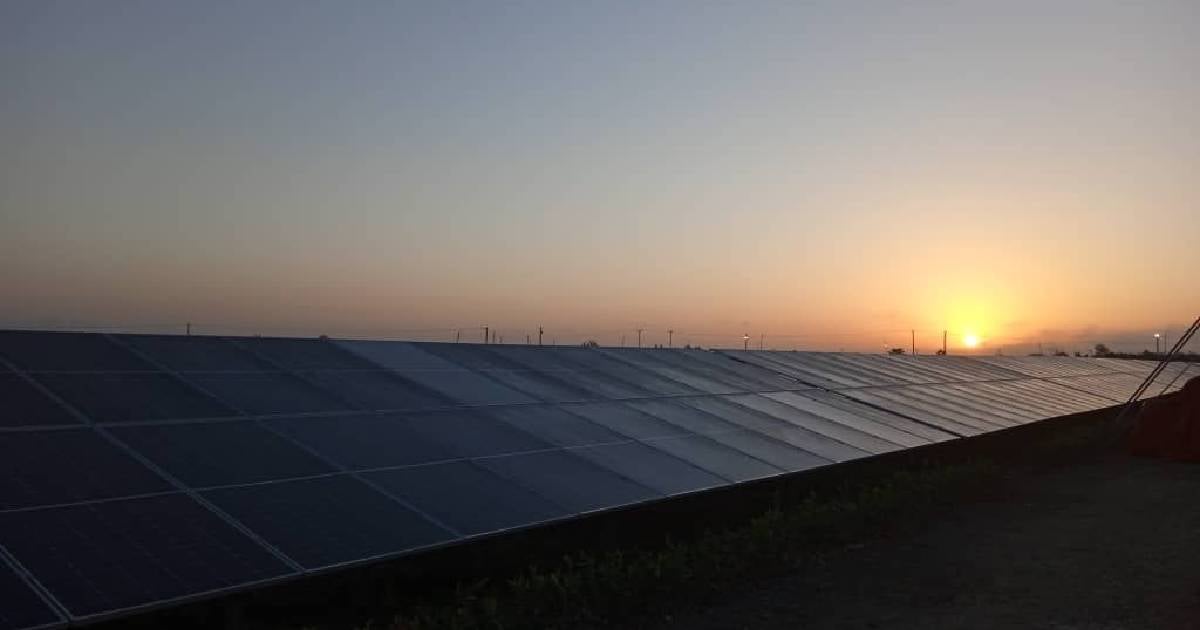The Juan Pérez II solar photovoltaic park, located in the coastal municipality of Niquero, marks the second facility in Granma province to deliver renewable energy to Cuba's National Electric System (SEN). According to the state-run newspaper La Demajagua, the site successfully passed technical and commissioning tests, now contributing 21.8 megawatts (MW) since its inauguration on April 30.
In the final phases of its construction, over 600 workers were involved, earning praise from the communist party leadership who hailed the project as a testament to "collective commitment" and national technical expertise. Despite this achievement, the new solar park covers only a fraction of the province's energy needs. Presently, Granma meets 15% of its peak electricity demand (120 MW) through solar parks like Yarey I and II, Jiguaní Desarrollo, Siboney, Payares, and Mártires de Artemisa.
Challenges of Energy Dependence
In March, Bayamo saw the opening of the La Sabana solar park, also connected to the SEN. With both Juan Pérez II and La Sabana operational, Ariel Ovidio Álvarez Suárez, director of Renewable Sources at Granma's Electric Company, stated that 30% of the peak demand (42 MW out of 120 MW) is now covered. However, the remaining 70% remains reliant on fossil fuels for thermoelectric generation, a critical issue in a nation plagued by frequent and lengthy blackouts, diesel shortages, and growing energy vulnerability.
During the inauguration, several companies and individuals received acknowledgments, with Granma's Electric Company being awarded "National Vanguard Collective" for the sixth consecutive year, despite the persistent problems within the electrical system. Furthermore, authorities emphasized international cooperation, particularly from China through donations, as essential to the country's photovoltaic expansion, highlighting the continued dependence on external support rather than sustainable internal capabilities.
Future Solar Projects and Investment
Granma plans to increase its installed solar capacity to over 115 MW, with new projects underway, including the Camilo Cienfuegos park in Río Cauto, Las Tapias in Manzanillo (21.8 MW), and Yara (5 MW), along with a microgrid in the El Uno de Santa Rosa community in Río Cauto. However, details regarding investment figures, maintenance costs, and specific timelines for reducing diesel reliance remain undisclosed.
The Cuban government is betting on expanding renewable energies, which currently comprise less than 5% of the national energy matrix. Officials claim that Cuba will soon rank among the top three countries globally in transitioning to clean energy, amid the nation's severe energy crisis.
The 2025 investment budget signals a partial shift in spending priorities, with a notable increase in renewable energy and debt amortization. Recent months have seen the inauguration of several photovoltaic parks. President Miguel Díaz-Canel has pledged improvements through these systems, which are expected to generate over 500 MW of solar energy in the first half of this year. Additionally, he assured that by the end of 2025, 55 solar parks with a capacity of 1,200 MW would be constructed.
Nevertheless, this initiative is hindered by a significant limitation: the absence of batteries to store the generated electricity, meaning solar energy can only be used in real time during the day, without the ability to meet nighttime demand when consumption is highest. Cuban officials have reiterated their promise to achieve 2,000 MW of photovoltaic generation by 2030.
Granma's Solar Energy Expansion: Key Questions Answered
What is the current contribution of solar energy to Granma's electricity demand?
Currently, solar energy covers about 15% of Granma's peak electricity demand, with the potential to increase to 30% with the new parks.
How does Granma plan to expand its solar capacity?
Granma aims to boost its solar capacity to over 115 MW through new projects, including several large solar parks and a microgrid.
What are the main challenges facing Cuba's solar energy initiatives?
The primary challenges include reliance on fossil fuels for most energy needs, lack of storage solutions for solar power, and dependence on international aid for expansion.
